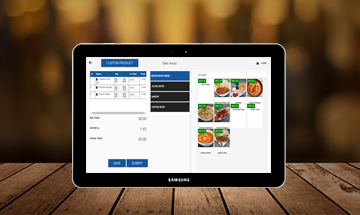ENTERPRISE POS SECURITY

Several vulnerabilities across retail checkpoints are frequently accessed by unauthorised parties looking to steal information or payment card details. Security across the POS is pivotal to creating safe environments for customer transactions. One of the major concerns is a memory scraping POS malware where even some of the largest retailers have fallen prey to this stealing. However, the memory scraping software works when payment data remains unencrypted.
In 2013, a Backoff memory scraper was against the Target Database to access around 70,000 accounts.
POS systems come with a level of risk even with the presence of security. Attackers earmark usable systems that are vulnerable to automated outbreaks on their POS environments. There are infiltrations and aggregations where targeted systems are exploited through social engineering techniques. Data is then moved to another location with the target environment for accretion and then offloaded into an external space accessible by the attacker.
Some of the biggest examples of POS security compromises and data breaches are:
Target - in 2013, the PII payment card information of at least 70 million customers was stolen.
In 2014, a major retailer Home Depo was hit with POS malware. Around 56 million customers across 2,200 stores, were impacted.
Finally, Wendy’s, the famous fast-food chain, was infected with POS malware. There was a data breach of an undisclosed number of records. All these companies lost millions in court cases.
Therefore, it is now important to pay attention to POS security more than ever.
Best Practices
To avoid POS data breaches, enterprises should prevent malware infections through improved POS security.
- Data encryption of all POS entries must be carried out, which should be decrypted only when it reaches the payment processor.
- Application whitelisting should be performed to allow just necessary applications on a POS.
- Apps that normally add risks, such as email or web browsers must remain blocked to prevent channelized malware infections.
- Regular software updates will prevent attackers when security patches are implemented as new vulnerabilities are discovered. Secure the system with patch management.
- All POS systems’ activity and data must be monitored, to detect any indication of threat or anomalous activity. Networks utilized by POS systems may be segmented and secure, complex passwords along with two-factor authentication should be applied.
- Antivirus software should be run periodically to scan malicious files.
- The physical security of the POS system must also be taken into account since cybercriminals can attach card skimmers to steal customer credit card numbers.
- Employees must be trained to detect such suspicious movements.
POS security requirements
Due to the sheer volume of known and unknown threats, POS security can be rather challenging. The POS holds valuable customer data, and even more, powerful malware is being created all the time to infiltrate the systems. Enterprises in the retail and hospitality sectors heavily rely on POS systems and must prioritize POS security. Otherwise, it might cost the company dearly in terms of revenue and reputation.

